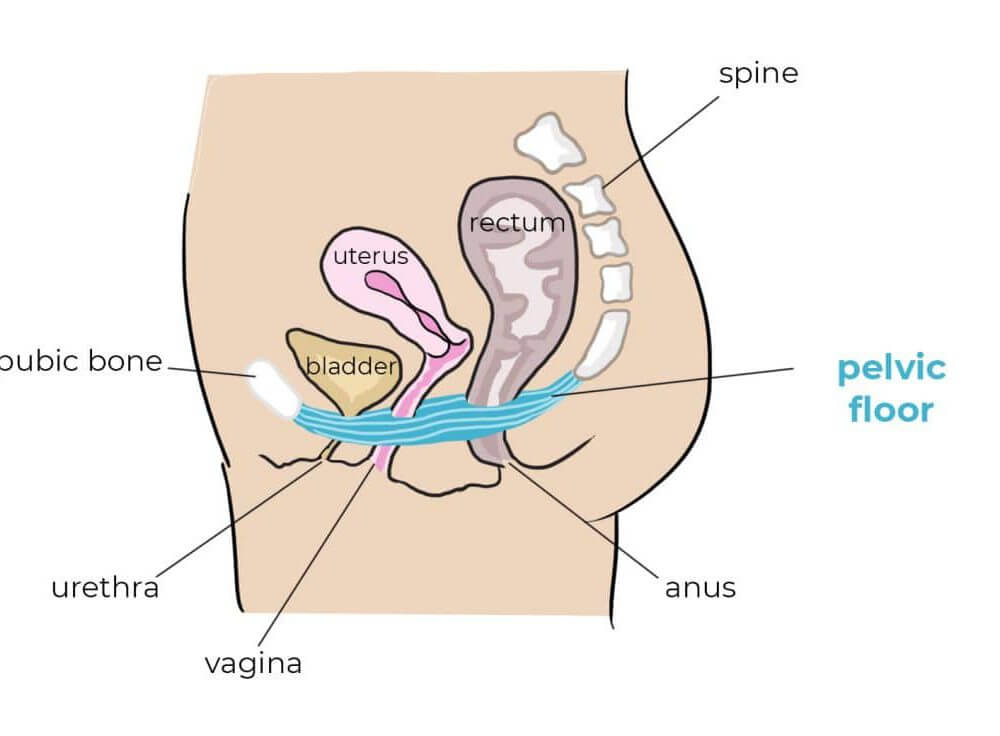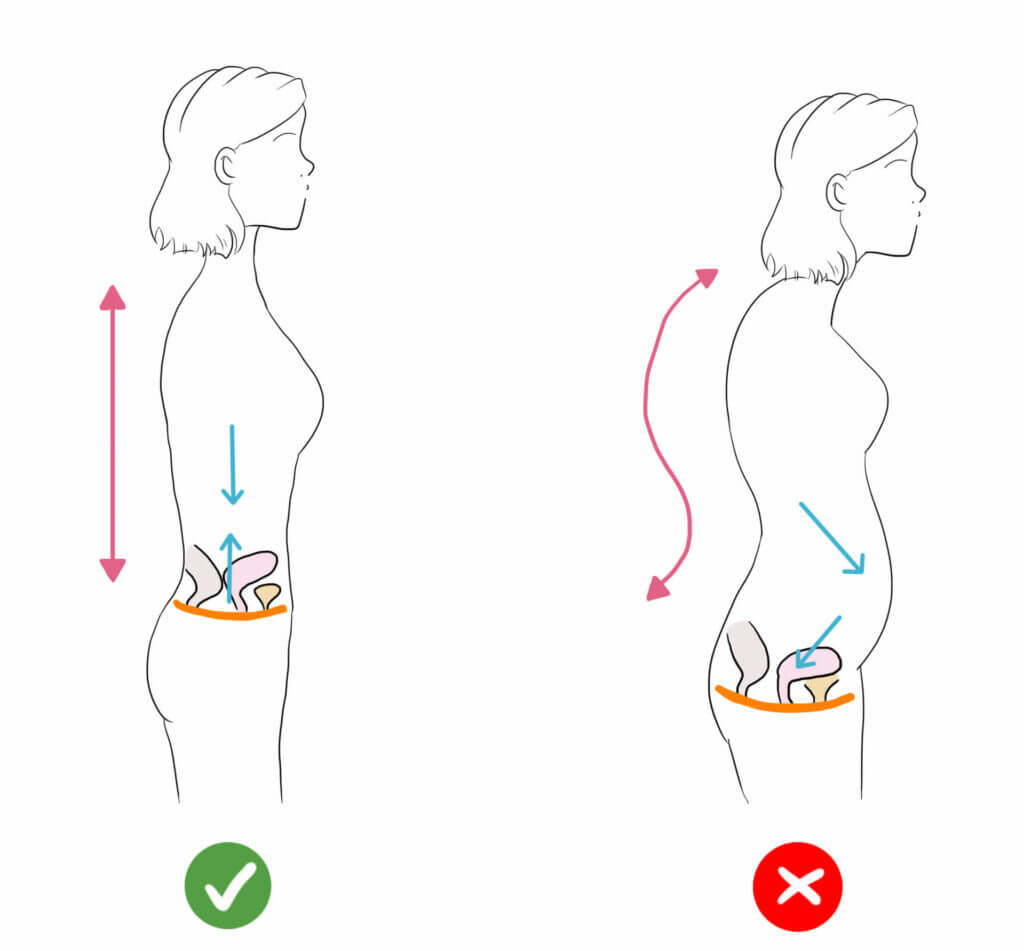
What is the link between pelvic floor and back pain?
Very often, we associate the pelvic floor with urinary leaks or intimacy. Yet the pelvic floor muscles have a very important task. It surrounds the anus and the genitals and extends from the pubic bone to the coccyx. A weakened pelvic floor can lead to various health problems, such as organ prolapse. Back problems can also have a negative effect on the pelvic floor or the pelvic floor becomes a trigger for back pain.
The back is subject to constraints during the day because of activities of daily life but also during the night because of the lying position maintained for several hours. Although the back generally appreciates movement and dislikes immobility, not all movements are good for it. Lower back pain can have many causes that are often misdiagnosed. A weakened pelvic floor can also be related to back pain. So if you have any doubts, consult your doctor.
Here are the main ones:
Posture, lower back pain and pelvic floor:
Back pain can modify the posture and a bad posture can provoke lower back pain.can lead to lower back pain and affect the pelvic floor muscles. Indeed, the vagina has an oblique orientation: the top is oriented backward, and the bottom is oriented frontwards, as you can see on the following diagram:

In combination with a normally aligned lumbar spine, this arrangement protects the organs of the small pelvis. These normally lie on top of each other and “rest” on the pelvic floor. If posture is weak, the forces acting on these organs change and complications can occur in the long term. Complications include, for example, a rectocele or cystoycele.
Back pain and the impact of the pelvic floor
In the case of a too curved lumbar, the vagina’s axis loses its usual orientation (from the back to the front) and becomes vertical. The cervix goes on top of the vagina. Associated with other factors (bad posture, strong abdominal push, chronic coughing, pelvic floor weakness…) It can then begin to slowly descend, which in the worst case can lead to prolapse.
When the back is curved forward, this is what we call a kyphosis. The diaphragm presses on the abdominal organs, the pelvic pressure increases, and the organs apply pressure on the pelvic floor (we can notice an impression of heaviness in the lower abdomen). Pregnant women also run the risk of adopting this bad posture due to the extra weight.

Better understand the muscle chains
The pelvic floor muscles, like other muscles in the body, don’t function independently. They are linked to other muscles in the form of “muscle chains”
For example, the most known muscle chain is the leg posterior muscle chain that gathers hamstrings, calves, and foot arches. It is because of the chain that it is complicated to rise a straight leg because all the muscles are stretched, whereas it is much easier to raise it with a slightly bended knee (that would de-stretch the hamstrings).
The pelvic muscles work simultaneously with back muscles and abdominals. The pelvic floor is once again the center of it, because it is located in the intersection between the 2 biggest muscle chains: the posterior chain and the front chain.
An idea of Françoise Mézières
The muscle chains were described by Françoise Mézières, a French physiotherapist. She has developed a care concept based on stretching. According to her, muscular retractions can provoke pain or further complications elsewhere in the muscle chains.
Consequently, for example, too much or insufficient flexibility can severely affect the pelvic floor and vice versa.
This list of links between the pelvic floor and the lower back pain is a non-complete list, but it helps to understand that the body is more than just a complex of independent organs. Each organ is influenced by others and the body must be seen as a whole.
How to avoid lower back pain?
Back pain can occur because of a bad move, overloading, etc. It can be interesting to take a few minutes to analyze pain:
- Does it appear in the morning? During the night? In the evening, after a long workday?
- Is it caused by a particular move? A special posture?
- Is it improved by massage? Heat? Stretching?
These indications will help you identify what causes the pain and what relieves it.
In any case, the back likes and has to move! But be careful not to do painful movements, because the worst is not moving, being immobilized. Let’s not forget that the word “physiotherapist” comes from the old Greek and means “heal by movement”.
Sports we recommend are soft sports like walking, swimming, gym, and you can try yoga or pilates as well.
Download the free app Emy – Kegel exercises


